
I'm In The December 2025 Issue Of The New Zealand Gardener Magazine
Hello friends,
An exciting opportunity happened a couple of months ago when the New Zealand Gardener magazine contacted me and wanted to chat about my blogging adventures in growing, harvesting, and processing my own sugar beet, as part of a wider article about kiwi gardeners growing their own sugar in various forms (including sugar cane and sugar maple).


I was quite happy to do this as I'm a big fan of the magazine (I buy a copy of it each month), and New Zealand Gardener is such a great source of local news and advice for New Zealand gardeners.
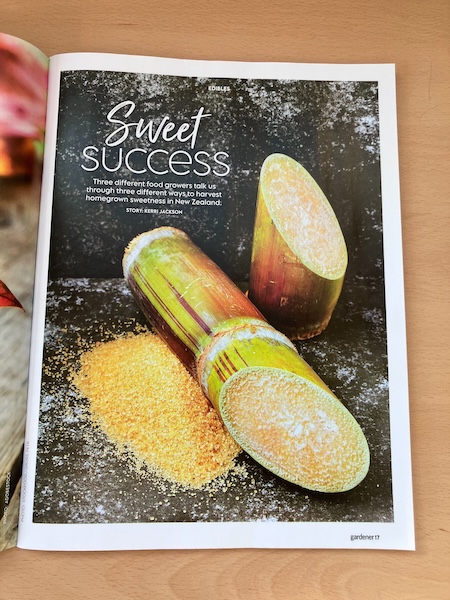
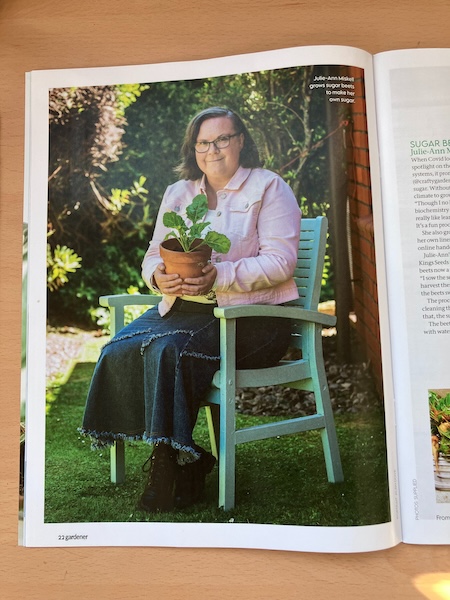
They used two of my blog posts as a guide for growing and harvesting sugar beets, as well as photos of mine for their article, along with a phone interview I did with them in early October 2025. If you want to read more about growing and processing sugar beet plants from these blog posts, here is where you can find them:
1. Making Sugar From Homegrown Sugar Beets
2. Harvesting My Own Sugar Beet Seeds
If you're on the hunt for sugar beet seeds so you can try growing your own sugar, sadly Kings Seed no longer stocks the seed, but I grew sugar beet plants from the last of my sugar beet seed stock, and waited two years until they had flowered and set seed, to harvest my own sugar beet seed earlier this year in autumn 2025.
I have some of those sugar beet seeds available for sale in my online store Hearth & Oak. There is a limited amount for sale, as I've sowed a lot of the seed in my own garden this spring. It would be good however, to have sugar beet seeds in the hands of more New Zealand gardeners, so we don't lose sugar beet seed stock in New Zealand.
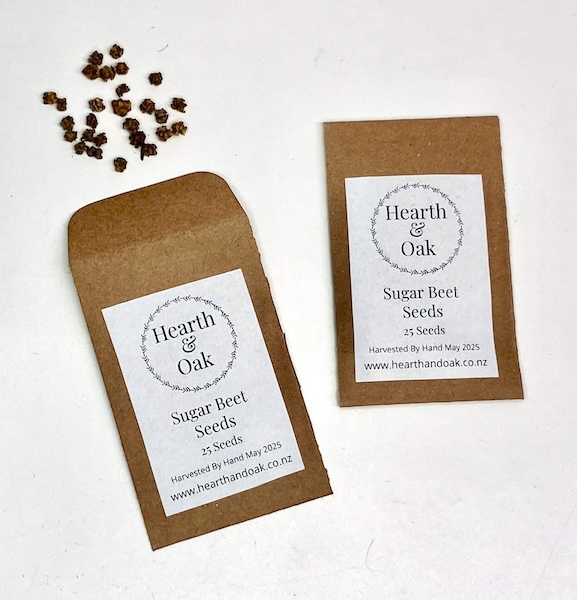
As for me, I'm quite chuffed to be included in my favorite gardening magazine, and I never thought a couple of years ago when I started blogging about growing sugar beet in my backyard, that it would lead to this opportunity...
Have a wonderful day
Julie-Ann
Want to discuss my post? Feel free to chat with me on Instagram or Mastodon or Bluesky, and now also Facebook.
Harvesting and Processing Tea From My Camellia Sinensis Plant
Hello friends,
I drink a lot of tea, and especially flavored black, green, and white tea, usually for breakfast and alongside a piece of toast. And of course since tea comes from the plant Camellia sinensis, growing my own tea plant, and then harvesting tea leaves from it, has been high on my list of things to do over the years.
Camellia sinensis, aka the tea plant, is in the camellia family, so if you can grow camellias in your garden, you can grow a tea plant of your very own. Camellia sinensis
thrives in conditions with part shade, and needs to be protected from strong winds, in acidic, well-drained, and organically rich soil. Consistent moisture is needed for the tea plant to be happy, especially during dry spells and leaf production, but it also doesn't like waterlogged conditions either. Here in Mosgiel where we live, our winter temperatures drop down to -6˚C, and in summer they rise up to 35˚C, and my tea plant happily survives both of these extremes without needing any frost cloth or extra watering.
The first challenge in growing my own tea plant was getting hold of a Camellia sinensis plant of my very own. The easiest time of the year to track down tea plants is in the spring, but when I hunted for one in autumn, I was able to find one for sale online. Once it arrived by courier, I planted it in a spot on the south side of the house, where it gets periods of both sun and shade during the day, and it lives beside my blueberry bushes which also like acidic conditions.

Ever since I bought my tea plant, I've been patiently waiting for it to be big enough to harvest the leaves for processing. Tea leaves are harvested by plucking off new buds and the first two leaves from the tip of the plant in spring for the highest quality tea. After doing some research on how to process tea at home, I decided to wait and see how big of a harvest I got before making a decision about which tea type to process. Well, it ended up being a very small harvest, a total of 8 grams of tea leaves this year, so I opted to go for the simplest tea processing method, which was making white tea.

The process of making white tea involves only two steps, and they are both very easy to do at home. The first step was to pluck the tea leaf tips off the plant and then lay them out to dry for 48 hours, in a stage they call withering. During withering, tea leaves begin breaking down, and the biochemical processes inside them leads to a tea which is fruity and floral and sweet, with reduced astringency and a sweet aroma profile.


I harvested tea leaves in the morning, as was suggested in my research, and then laid them out to wither on a tray in the sun for 48 hours. As it's been quite windy this spring, I couldn't lay them outside, as they would very easily blow away, so I set them up inside our glasshouse for two days.

At the end of this step, it was time to dry the tea and stop the break down process. For white tea, you dry the withered tea leaves at 180˚F/82˚C for 15 - 20 minutes, or until the leaves are crispy. For this step I decided to use our dehydrator on its highest setting, which ended up taking 1 hour of drying time at 80˚C.

When the tea leaves were dry and crispy I removed the leaves from the stalks and then popped them in our coffee/herb grinder for about 10 seconds to break the leaves up smaller. The resulting leaves were only big enough to make two cups of tea.


All that remained was to brew my own cup of tea, so I placed 1 teaspoon of white tea leaves into a strainer and added it to a tea cup. I heated water to around 85˚C, and then added it to the cup and let the tea steep for 1 minute.

The resulting tea was just wonderful, despite some of the tea leaves escaping the strainer while steeping. The white tea flavor was light, sweet, delicate, and had a slight floral taste, along with a pleasant grassy scent. It was very drinkable and much nicer than white teas that I've bought commercially.
Now knowing how easy it is to make my own white tea, I'm very much looking forward to harvesting and brewing my own tea each spring. Hopefully as my tea plant continues to grow bigger, I'll get bigger harvests so that I can try brewing other types of tea.
Have a wonderful day
Julie-Ann
Want to discuss my post? Feel free to chat with me on Instagram or Mastodon or Bluesky.
Autumn Harvests
Hello friends,
Autumn is well and truly upon us, and the harvests are coming in thick and fast.
My grapes have already been harvested.
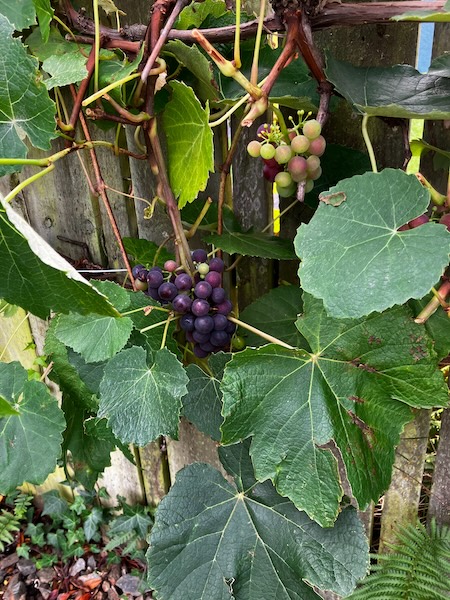
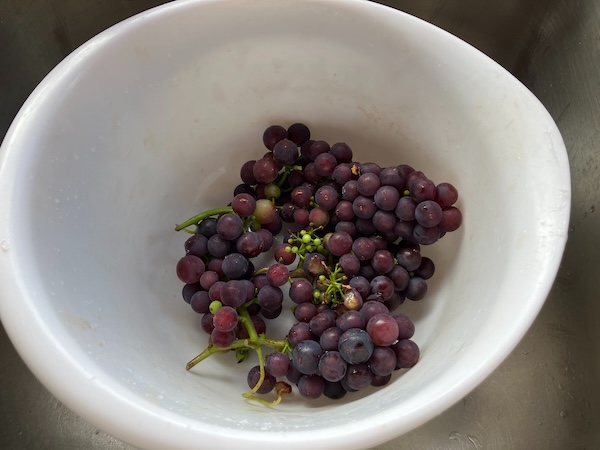
And my mandarins are now being harvested too.
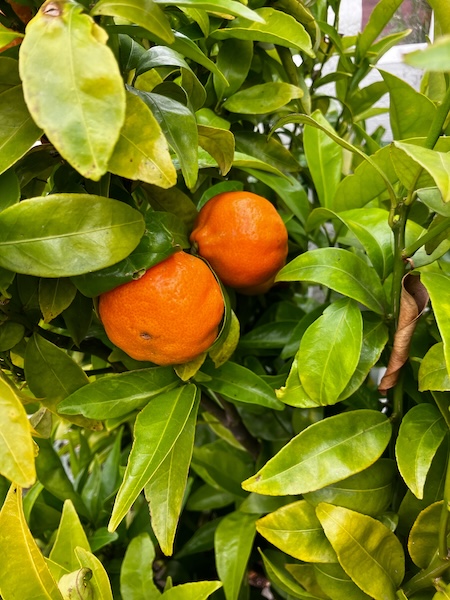

I also managed to harvest my pumpkins before our first frost on the 24th of April.
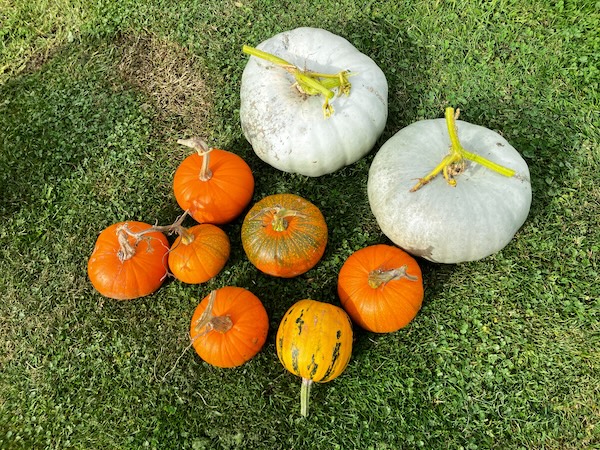
And it's now peak feijoa season, which means picking up feijoas off the ground before the birds get to them, and them giving them away to anyone who wants them because there's a glut.
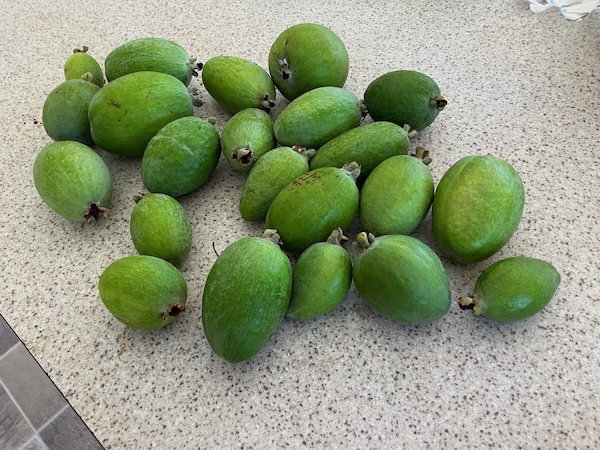
I love the bounty of fruit and vegetables this time of the year, the challenge is to process them as they come in so that the food doesn't gooff while sitting in our fridge.
Have a wonderful day
Julie-Ann
Want to discuss my post? Feel free to chat with me on Instagram or Mastodon or Bluesky.
Our First Apple Harvest
Hello friends,
Back in the winter of 2024 I planted two apple trees, Ballerina Waltz, and Ballerina Flamenco. I chose those two apple trees after a garden consultant suggested the Ballerina apple varieties, as they grow narrow and tall, and have an abundance of fruit, which make them perfect for smaller gardens.
Ballerina Waltz is a tart eating, cooking, and dehydrating apple, and Ballerina Flamenco is a sweet eating apple. Between both trees, we would have enough apples for hubby and I to eat fresh, and we could also use them for cooking and dehydrating when we have excess produce.
In spring they both flowered for the first time, but only Ballerina Waltz set fruit, and we've been impatiently waiting for them to ripen ever since.
By the time we got to March, only two apples remained. They slowly turned red, and over the last couple of weeks I periodically tested them to see if they were ripe.


And finally, the first apple was ready. When I tilted the apple upward, and it snapped off the tree.


I very excitedly took our first apple inside and showed it to hubby. We cut it open, and the seeds inside were a nice brown colour, showing that the apple was ripe via a another method.


The Ballerina Waltz apple was indeed sweet but tart, but it was also nice and crunchy and juicy. It also wasn't so tart that hubby refused to eat it. A couple of days later the second apple was ready to eat, and we once again cut it in half so that we could share it.
We are very happy with our purchase, and over the coming years when we'll get bigger and bigger harvests. If you are wanting an apple tree, but just don't have the space in your backyard for a full sized apple tree, I really do recommend the Ballerina apple varieties. They now have a bigger selection of varieties, so you can choose one (or more) depending on the type of apple you are interested in.
Have a wonderful day
Julie-Ann
Want to discuss my post? Feel free to chat with me on Instagram or Mastodon or Bluesky.




